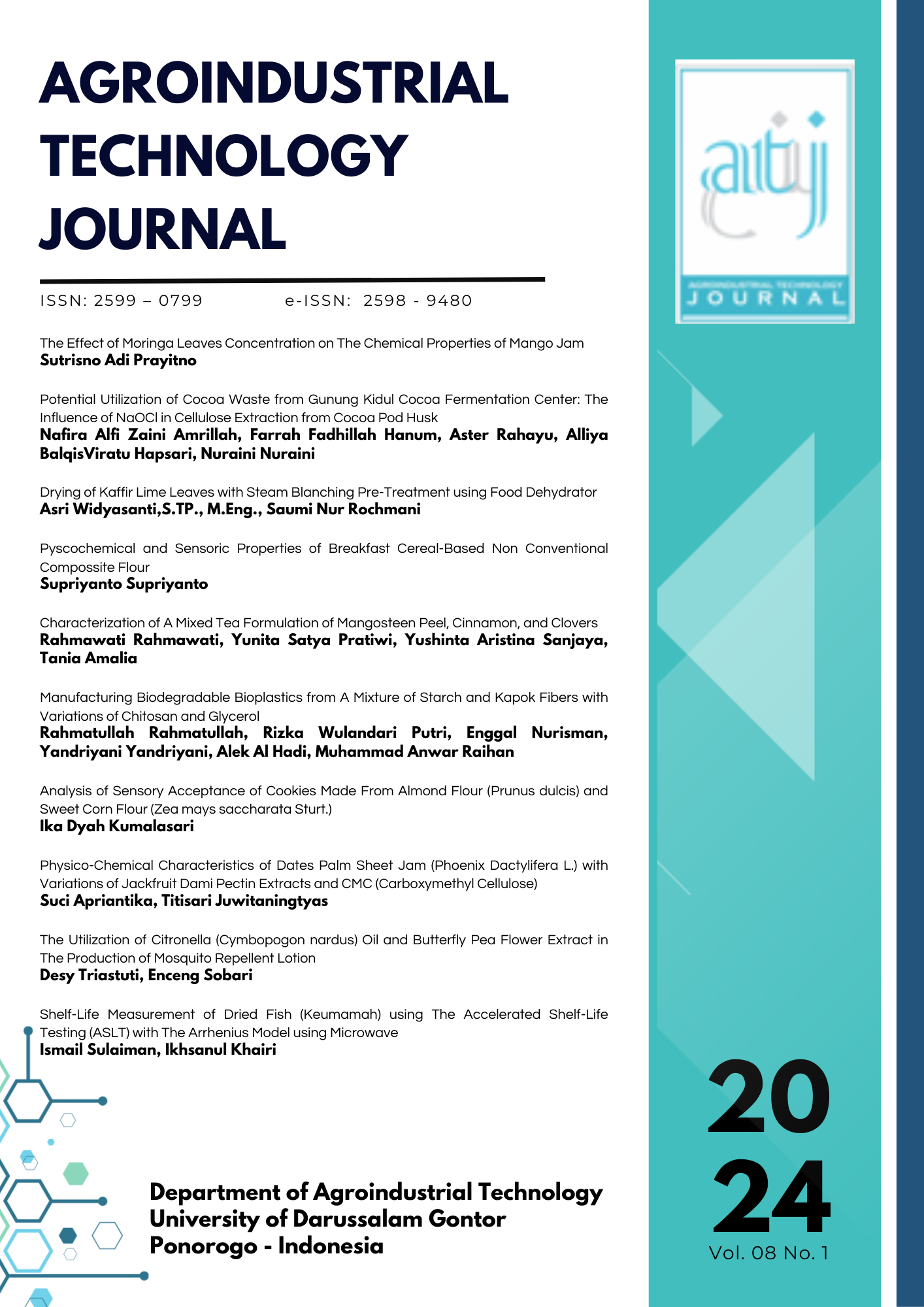Analysis of Sensory Acceptance of Cookies Made From Almond Flour (Prunus dulcis) and Sweet Corn Flour (Zea mays saccharata Sturt.)
DOI:
https://doi.org/10.21111/atj.v8i1.11123Abstract
Almonds have a high folic acid content and are beneficial for pregnant women and the growth of babies in the womb and the high protein content can help the diet process. Sweet corn is high in folic acid to prevent congenital abnormalities in babies and high in starch to form the texture of cookies. This research aims to determine the results of sensory tests or the panelists' level of preference for almond flour and sweet corn flour cookies. This research method used a Completely Randomized Design (CRD) with 1 formulation variation factor carried out 3 times with a ratio of almond flour : sweet corn flour, namely F1 (100 % : 0 %), F2 (75 % : 25 %), F3 (50 %). % : 50%), F4 (25 % : 75 %) and F5 (0 % : 100 %). The parameters analyzed are sensory tests including texture, color, taste, aroma and overall preference. The experiment was tested with 30 untrained panelists. Data were analyzed using analysis of variances (ANOVA) with further tests using Duncan at a confidence level of 95%. The results of the sensory test of almond flour and sweet corn flour cookies had a significant effect on the parameters of texture, color, taste, aroma and overall preference. The sensory test results obtained were texture 2.70-4.07 (from dislike to like), color 2.40-4.20 (from dislike to like), taste 2.87-4.10 (from dislike to like), aroma 2.97-3.87 (from dislike to like), and overall liking 2.93 to 4.13 (from dislike to like).Downloads
Submitted
Accepted
Published
How to Cite
Issue
Section
License

This work is licensed under a Creative Commons Attribution-NonCommercial-ShareAlike 4.0 International License.
The author whose published manuscript approved the following provisions:
1. The right of publication of all material published in the journal / published in the Agroindustrial Technology Journal is held by the editorial board with the knowledge of the author (moral rights remain the author of the script).
2. The formal legal provisions for access to digital articles of this electronic journal are subject to the terms of the Creative Commons Attribution-NonCommercial-ShareAlike 4.0 International License (CC BY-NC-SA 4.0), which means that Agroindustrial Technology Journal reserves the right to save, transmit media or format, Database), maintain, and publish articles without requesting permission from the Author as long as it keeps the Author's name as the owner of Copyright.
3. Printed and electronically published manuscripts are open access for educational, research and library purposes. In addition to these objectives, the editorial board shall not be liable for violations of copyright law.



